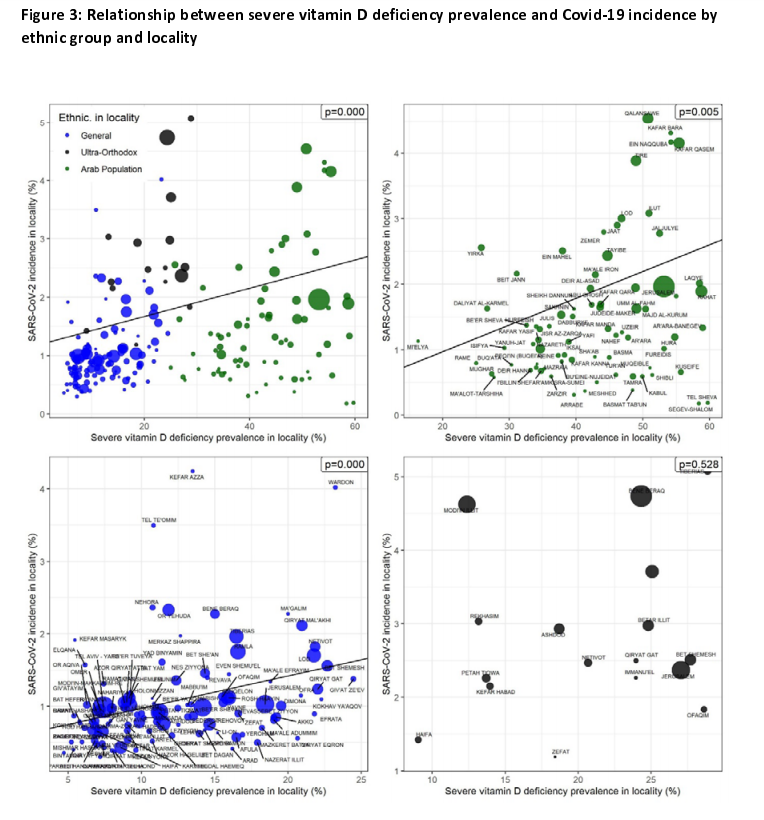
A compilation on current data on seasonality of SARS-CoV-2 as well as historic data on other virus, such as common cold HCoV's and influenza
Leading virus immunity expert Prof Iwasaki on seasonality of virus: highlights the importance of the environmental factors: temperature and humidity as well as vitamin D status, in modulating immune responses to viral infections in the respiratory tract. annualreviews.org/doi/10.1146/an…
Temperature, Humidity, and Latitude Analysis to Estimate Potential Spread and Seasonality of Coronavirus Disease 2019 (COVID-19).
jamanetwork.com/journals/jaman…
jamanetwork.com/journals/jaman…
In the above cohort study of 50 cities with and without COVID-19 had distribution roughly along the 30° N to 50° N latitude corridor with consistently similar weather patterns, consisting of mean temperatures of 5 to 11 °C combined with low specific and absolute humidity.
Seasonality of SARS-CoV-2: Will COVID-19 go away on its own in warmer weather? For the novel coronavirus SARS-CoV-2, we have reason to expect that like other betacoronaviruses, it may transmit somewhat more efficiently in winter than summer
ccdd.hsph.harvard.edu/will-covid-19-…
ccdd.hsph.harvard.edu/will-covid-19-…
....The size of the change is expected to be modest, and not enough to stop transmission on its own. Based on the analogy of pandemic flu, we expect that SARS-CoV-2, as a virus new to humans, will face less immunity and thus transmit more readily even outside of the winter season
@michaelmina_lab: Epidemiologist, Immunologist, Physician, Harvard Public Health/Medical School
"Mistaking ongoing transmission in the summer for a "less seasonal virus" is not smart. All evidence points in the other direction"
"Mistaking ongoing transmission in the summer for a "less seasonal virus" is not smart. All evidence points in the other direction"
https://twitter.com/michaelmina_lab/status/1313879257202995200?s=20
Study that provides an overview of the global seasonality of sCoVs. Findings offer clues to the possible postpandemic circulating season of SARS-CoV-2 and add to the knowledge pool necessary for postpandemic preparedness for SARS-CoV-2. academic.oup.com/jid/article/22…
Early detection of seasonality and second-wave prediction in the COVID-19 pandemic
medrxiv.org/content/10.110…

medrxiv.org/content/10.110…


Temperature, humidity and latitude analysis to predict potential spread and seasonality
Bottom Line
The transmission of COVID-19 is associated with the 30 to 50 degree N’ longitude corridor and weather patterns and low specific and absolute humidity.
cebm.net/study/covid-19…
Bottom Line
The transmission of COVID-19 is associated with the 30 to 50 degree N’ longitude corridor and weather patterns and low specific and absolute humidity.
cebm.net/study/covid-19…
The seasonal differences between the Southern and Northern hemispheres might have played a role in the spread of SARS-CoV-2.
frontiersin.org/articles/10.33…
frontiersin.org/articles/10.33…
What happens to COVID19 when winter returns to the Northern Hemisphere is still uncertain, but here are some things we know:
-people will spend more time indoors
-indoor air will be drier and less ventilated
-endemic CoVs have pronounced seasonality.
-people will spend more time indoors
-indoor air will be drier and less ventilated
-endemic CoVs have pronounced seasonality.
https://twitter.com/richardneher/status/1293857065425866754?s=20
Factors Influencing the Seasonal Patterns of Infectious Diseases
Factors discussed: human activity, seasonal variability in human immune system function, seasonal variations in vitamin D levels, seasonality of melatonin, and pathogen infectivity.
ncbi.nlm.nih.gov/pmc/articles/P…
Factors discussed: human activity, seasonal variability in human immune system function, seasonal variations in vitamin D levels, seasonality of melatonin, and pathogen infectivity.
ncbi.nlm.nih.gov/pmc/articles/P…
Vitamin D Status and Seasonal Variation among Danish Children and Adults: A Descriptive Study
mdpi.com/2072-6643/10/1…
mdpi.com/2072-6643/10/1…

Regarding Vitamin D:
Positive RCT data: Of 50 patients treated with calcifediol (25-hydroxy-vitamin D), one required admission to the ICU (2%), while of 26 untreated patients, 13 required admission (50%) p < 0.001 sciencedirect.com/science/articl…
Positive RCT data: Of 50 patients treated with calcifediol (25-hydroxy-vitamin D), one required admission to the ICU (2%), while of 26 untreated patients, 13 required admission (50%) p < 0.001 sciencedirect.com/science/articl…

Walkthrough by
@tomaspueyo
on data, including the link to bradykinin, discovered by a supercomputer in Oak Ridge in a large collaboration elifesciences.org/articles/59177
@tomaspueyo
on data, including the link to bradykinin, discovered by a supercomputer in Oak Ridge in a large collaboration elifesciences.org/articles/59177
https://twitter.com/tomaspueyo/status/1302892639193194497?s=20

Preprint from a collaboration between NIH, King's College London, University of Purdue, Oxford, Auckland, Concepcion, Virginia, and Lübeck:
https://twitter.com/RHCMcG/status/1285293367702614016?s=20
Cohort study of 489 who had a vitD level measured in the year before COVID-19 testing, the relative risk of testing pos for COVID-19 was 1.77 x greater for patients deficient vitD status compared with sufficient vitD status, statistically significant. jamanetwork.com/journals/jaman…
The link between vitamin D deficiency and Covid-19 in a large population medrxiv.org/content/10.110… 



A thread on how our model takes into account the seasonality of COVID-19. We anticipate a large increase in daily COVID-19 deaths in the US in late November and December......but the increase we’re projecting is driven most importantly by seasonality.
https://twitter.com/IHME_UW/status/1309627883636187136?s=20
Side note
list of other more precise predictive models: covid19-projections.com/about/#histori…
New danish model: covid19danmark.dk/model.html
list of other more precise predictive models: covid19-projections.com/about/#histori…
New danish model: covid19danmark.dk/model.html
Closed environments facilitate secondary transmission of coronavirus disease 2019 (COVID-19)
The odds that a primary case transmitted COVID-19 in a closed environment was 18.7 times greater compared to an open-air environment
medrxiv.org/content/10.110…
medrxiv.org/content/10.110…
The odds that a primary case transmitted COVID-19 in a closed environment was 18.7 times greater compared to an open-air environment
medrxiv.org/content/10.110…
medrxiv.org/content/10.110…
Evidence of Protective Role of Ultraviolet-B (UVB) Radiation in Reducing COVID-19 Deaths papers.ssrn.com/sol3/papers.cf… 

We find that UV light, in particular, is associated with decreased disease growth rate relative to other factors. Based on these associations with weather, we predict that C19 will decrease temporarily during summer rebound by autumn, and peak next winter
pnas.org/content/early/…
pnas.org/content/early/…
Seasonal effect of humidity, lower viral dose due to UVB exposure, and vitamin D mentioned as factors 

Again higher indoor transmission fits well with this study: SARS-CoV-2 viral load predicts COVID-19 mortality
https://twitter.com/martinjuhl2/status/1310264097053835264
• • •
Missing some Tweet in this thread? You can try to
force a refresh







